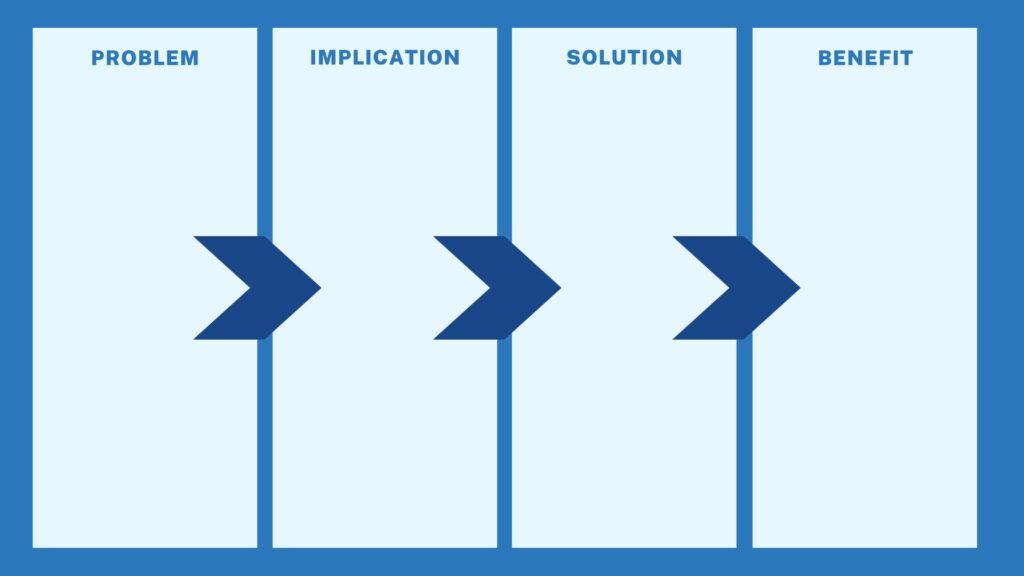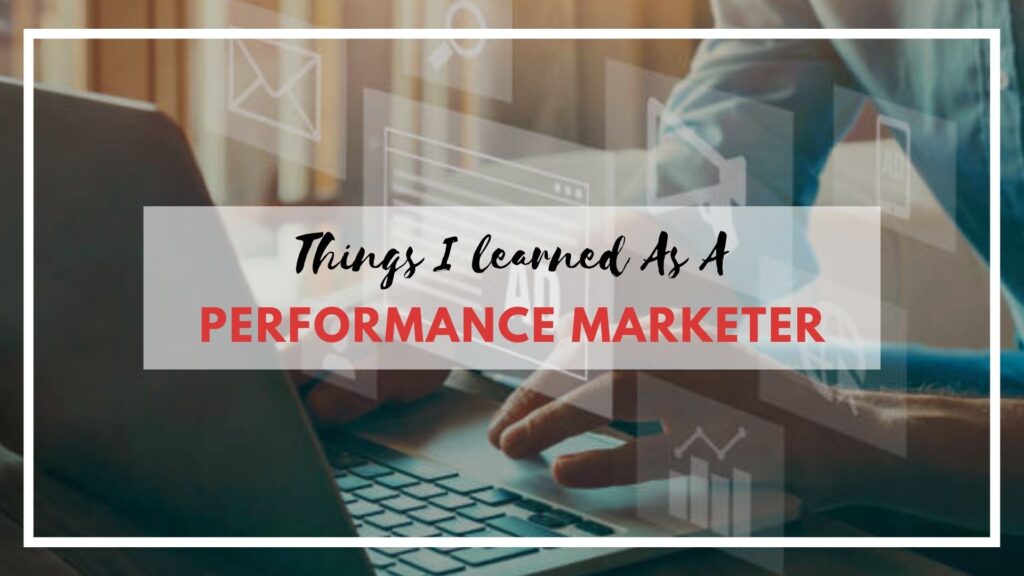Hello Everyone,
I welcome you to my blog!
In this blog, I will share my learnings and experience of working as a performance marketer. I am about to share 12 points that I learned working for more than 12+ months now.
When I started my career as a marketer I was always confused on how do CMO’s, brand manager’s strategize their marketing but after working at companies & agencies, reading and investing in multiple courses I have come up with these 12 essential points with which one can start building their marketing strategy and increase their performance.
So let’s get started with Step 1:
Step 1: Know Your Target Audience
There is nothing called as Market For Everyone.
When it comes to finding your target audience, marketers usually have their own ways. Some start off by defining the buyer’s persona whereas some use different need based frameworks to understand and evaluate their target audience.
I still remember making the buyer’s persona using the tool Hubspot. A buyer’s Persona works best when making your brand story or preparing a presentation but It does have its limitation when it comes to finding the target audience. You will rarely find an individual or group of individuals with similar characteristics to your buyer’s persona.
This led me to research more about Client Acquisition and how to find the right client and that’s when I realized that finding your target audience is very similar to how animals hunt.
Animals while hunting look for the quickest and easiest one to catch as all big species that hunt don’t want to run out of energy. Similarly, a business also has limited energy (when it comes to money and resources), and when I learned this fact It made me realize we need to prioritize our target audience, and by doing this I came up with this 3P Framework.
P: Stands for Priority. Your audience can be classified as P1, P2, P3
P1: People who are most likely to buy. As per data, there are always 3-5% of people who are looking to buy what you sell. Being a marketer I realized these are the best audience to go for.
As a kid, I used to go to my Dad’s shop and he used to always insist me to first attend the people present and not go for leads or calls. What he meant was that these were P1 audiences who were ready to buy and leaving them would be a waste of our resources and efficiency.
P2: People who can be convinced to buy. These are audience who are looking to be educated and encouraged.
I learned this when I was learning the google ads platform we had the term in-market & affinity audiences. Google’s algorithm was used to segregate people actively looking for or interested in the products that we were selling. This helped us to get better ROI on our campaigns. This is when I realized the importance of the P2 Audience.
P3: People who need a lot of Education: Lastly some people would need a lot of your investment and resources. These are people I refer to as priority 3. The best way is to use social media and low-cost marketing techniques that get you the maximum eyeballs.
So that’s how I define my audience. This P1, P2, and P3 not only make things simple but also help you to effectively get the maximum investment from your marketing efforts.
Step 2: Persona V/S Audience
In step 1, We learned the importance of knowing your target audience.

But the question is how to put this audience to use. Working as a digital marketer has helped me with this. As mentioned a persona might be good for your brand story and character but you can rarely find an exact audience that might be similar to your persona.
As Performance Marketers, we used to always define an audience rather than a persona. Say for instance which of the ones do you think would be easier for you to find and target?
Finding an audience and then optimizing is always been the best way to go for your target audience.
Step 3: Build Your Value Proposition
A good marketed product will always beat a bad marketed good product.
Marketing is about communication and how well you communicate your brand’s proposition will be a deciding factor in your marketing success. Ads with Clear value proposition and messages tend to rank higher than those with lesser clarity.
When I learned about Ad Ranks I realized how good ad copies and LP affect your overall quality score.
So how do we come up with a Value Proposition and understand we need to understand People. We as individuals are always looking for better alternatives to bad alternatives. Good marketers know how to find a bad alternative and then draft value propositions that indicate the implications of bad alternatives.
Here’s how I come up with Ad Copies

Four things people will take quick action for:
I learned this about people that the best ways to motivate any individual to take action is to link the implications with one of these four things:
- Health
- Money
- Relationships
- Significance
These four indicate the basic needs of any individual and once you link them with implications you can influence anyone. Influence is not to manipulate but to inspire them to take action when they read your marketing copies.
Step 4: Build A Proper Infrastructure
I learn’t that unexperienced marketer get started directly with marketing without a proper infrastructure this makes their entire marketing system really complex in the longer run which in turn builds a huge mess which is not easy to resolve.
Doing a proper transitions and integrating proper tags and tools can save a lot of hassle in the longer run.
Some Popular Integrations Include:
- Landing Pages x 3 – Home Page, Product & LP
- Web Measurements – GTM, GA.
- App Measurements
- Heatmaps & Click Maps
- Copywriting & Designing
Step 5: Build a High Converting Landing Page
Now which LP will turn out to be the best for your brand is difficult and most efficient way to decide is with data. Split test your pages and combinations and see what works best for your business.
I learned and noticed that most of high converting LP have many of these common attributes
- Explain the Value Proposition: someone with a better brand value can have higher conversion than their peers
- Explain How Will You Create/Provide Value mentioned: This provides a sense of certainty and trust among people
- Visualize: Recently google came out with an added extension called image extension. No wonder copies and pages that are able to help their audience visualize convert better.
- Make It believable: Social Proof
- Make taking the next step easy: have a clear CTA
Step 6: Competitor Analysis
I still remember my manager asking us to come up with 6 ad copies we all were struggling with finding the combinations and then he shared an insight on competitor analysis. He asked us to always study the existing ads of competitors that are running and take inspiration from their right work and improvise on their weak spots.
Tools like:
- Similar Web
- FB Ads Library
- Ahrefs: For SEO
- Competitors Newsletter
- Power Ad Spy
- Social Listening Tools
can help you take inspiration and come up with better creative ideas than your competitors
Step 7: Sync your Messaging
Someone with a better brand communication message will have a better ROI even though their competitors may have better tools.
Clarity & Communication are the core skill in marketing whether it is online or offline. The more clearer you are able to transfer the message to your audience the better are your results.
Having a sync messaging not only provides this clarity but also helps you in getting better Ad Ranks & Quality Score.
Whatever your ad says your landing page should convey the same. Most of the marketers lose their money here, if you get this right I must say your job is half done.
Show up for the right keywords and then use the right messaging for all your communication & marketing
Step 8: Explore Acquisition Channels
Spending time on the right platform is the most important thing you can do as a Performance Marketer!
Unfortunately most marketers jump to different channels before evaluating them properly.
What I have learned and observed is there are three criteria by which one needs to select their Acquisition Channel.
- Volume: As an Ad Channel what volume or kind of volume you have and how much of your target audience is present there.
- Targeting: What kind of targeting does that platform offer? Interest targeting, lookalike, behavior and intend targeting.
- Est. CAC: You can reach to this estimated value by calculating how much will it cost you to acquire one customer?
Step 9: Master Full-Funnel & Improve Your Conversion Rate
Most big agencies and marketing have very vast & complicated funnels. One working might not be able to get access or opportunity to master everything. But trying to learn about it and being curious about the full-funnel is what helps you in optimization and growth.
Improving your conversion rate also commonly termed as CRO Optimization is another thing that can add up in increasing your efficiency and get better results.
It Includes these 4 steps:
- Find Problem
- Test Different Hypothesis
- Fix Problem
- Repeat
Step 10: Learn Media Planning & Buying
Media Planning helps you to Ensure that you reach & communicate with your desired target audience in an efficient & cost-effective manner
If you are new to Marketing & Digital, Media Planning should be learned last after you have had sufficient exposure to various platforms.
Media Planning & Buying requires:
- Campaign Duration: The Duration for which the particular campaign would last.
- Definite Budget: The budget to be spent.
- Media Planned As Per Creative Strategy
I have written a dedicated blog about my learning & experiences about Media Planning. So you can Read More from the blog.
Step 11: Know Your Metric
As a marketer the one biggest challenge that I face even today is getting lost in numbers & metrics. There are so many campaigns to look at more the metric more is it confusing for the team to monitor and measure.
Setting a North Start Metric helps the entire team to align.
But the Question is What should be you North start metric?
Well the simple answer to this is the Metric that Matters.
I have created this small pdf mentioning the metric that one can choose depending on the type of objective they are trying to achieve. Download it to learn metric matters for you.
Step 12: Optimization In A NutShell
At first it’s most likely that the campaigns won’t work in our favour. In such cases the best way is to keep the existing structure running rather than coming up with a completely new structure. Small Wins and Optimization are key at first to get started.
Goal is to find a combination of
- Creative
- Copy
- Frequency
- Audience
- Timing
- Platforms
That get us the best results.
One thing that I usually follow is to pay attentions to frequency & rising CPM cost.
So that’s all my learning & experienced summarized in this blog. In case you are someone who’s interested in marketing & life do keep coming back to my blog where I passionately share my ideas & learnings.
Let me now in the comment your view about the blog and what are the best learning you have had.
Thanks & God Bless
